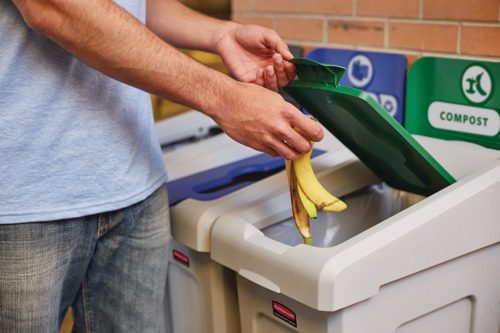
Though there are no limitations to when and where infection can spread, individuals are more likely to contract them in highly-crowded settings with little ventilation. Some of the most common places to contract infection are forms of public transport, including trains, buses and light rails. While many individuals work flexible hours, peak public transport hours of 8 am and 5 pm still see high volumes of commuters across the country.
Many state and local governments have implemented better cleaning protocols and practices throughout public transport vehicles. However, individuals are also accountable for ensuring they remain safe and that they do not transmit infections to others.
When catching public transport, there are many things people can do to remain infection-free. These include:
Wearing PPE to prevent infection
In some states and councils across Australia, wearing face masks may no longer be required or enforced on public transport. Even when train carriages are empty, it is recommended that patrons continue wearing masks. Some other PPE that can prevent the chance of transmission includes gloves, face shields and glasses.
The main reason to continue wearing PPE is that airborne infections can linger in the air for hours. This is especially true in transport that doesn’t have openable windows, as they likely use recycled air, which may cause infections to cycle throughout carriages. 
Learn about the transport’s infection prevention protocols
If you have multiple modes of public transport which you can take to work, finding the most hygienic alternative can help keep you safe from infection. Speaking with your local council or the staff of particular public transport services can give you an idea of the cleaning protocols they are implementing and how frequently they are doing so.
Asking if they are using microfibre cloths that assert optimum infection prevention is a good indicator that they are taking all precautions to keep their customers safe. Though they may not provide information on all questions, they may provide insight into which service will be more effective and safe.
There are also visible signs which can show if a public transport provider is attempting to prevent the spread of infection. They include:

Try not to touch handrails, buttons and surfaces where possible to avoid infection
There are many surfaces in public transport settings to help support the user's journey. One example is handrails in trains which stabilise standing patrons. Unfortunately, though they serve a good purpose, they are heavy touch points which often carry bacteria.
Though it may take some practice, try to avoid using these surfaces. This can alleviate the chances of harmful bacteria transmitting to your skin, which can cause infections including COVID and Influenza. The team at Rubbermaid Commercial also recommends bringing a hand sanitiser to remove any germs from this skin due to accidental contact. For those who need to utilise these surfaces for support, creating a barrier between the skin and surface can reduce the risk of transmission. Using an HYGEN Microfibre Cloth as this barrier is highly effective.
Stay away from those who are visibly sick
During peak hour travel times, users of public transport will need to sit or stand next to strangers. If services are cancelled, or there are issues on the public transport line, the volume of people on these trains or buses can multiply.
Unless they have COVID-19, no law prevents ill patrons from travelling on public transport. To avoid transmission, choosing to sit or stand away from public transport patrons with runny noses or dry coughs can reduce the chances of infection. It is important to note that appearance isn’t always a sign someone is carrying infectious bacteria. There are many cases of asymptomatic infections in the community. So, staying vigilant and wearing a mask/ PPE, even if someone looks well, can reduce the chances of falling ill.
Remember that infections can spread even in the cleanest environments
Even public transport companies that execute the strictest transport cleaning schedules can never be infection-free. This is especially true in peak hours when hundreds of guests utilise services to get to work, school and university.
It is important to remember that all patrons play a part in avoiding the spread of infection. Staying home when sick, wearing a face mask, and avoiding long conversations are ways each user of a transport service can help protect themselves and those around them.
Rubbermaid Commercial is passionate about keeping public transport users safe
The team at Rubbermaid Commercial works with a range of transport providers to supply high-performing cleaning solutions, which can eradicate bacteria and create an infection-free environment. If you are the owner, manager or an employee at a transport company, we want to help you find the most suitable cleaning equipment.
Contact the team at any time to get started.